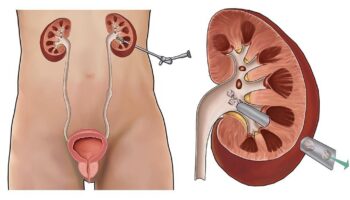Many women around the world experience prolapse of body organs like the uterus and vagina. Lack of treatment may worsen the condition. Your skilled Wildwood prolapse specialists at NUWA WORLD may recommend medication, lifestyle changes, and surgical procedures to treat your prolapse.
What is a prolapse?
A prolapse is when your body organs, such as your uterus and vagina, get displaced because of weakened ligaments supporting the area. There are different types of prolapse which include:
- Uterine prolapse
- Vagina vault prolapse
- Rectocele that causes your rectum to expand into your vagina
- Cystocele where your bladder moves downside to your vagina
- Enterocele where your small intestines bulge into the vagina
What causes uterine prolapse?
A group of ligaments and muscles in the pelvic area are used to hold your uterus in position. Weakening of the muscles causes the uterus to sag and results in uterine prolapse. Various factors weaken pelvic muscles. They include:
- Acute coughing
- Aging causes loss of muscle tone
- Obesity
- Non-stop constipation
- Complications resulting from child delivery
You may not experience any symptoms if you have a prolapse. However, if your uterus gradually moves out of position, you will have several symptoms and signs such as:
- Consistent bladder infections
- Need to pass urine frequently
- Excess and abnormal vaginal discharge
- Pain during sexual intercourse
- Pressure in your pelvis
- Constipation
Prolapse diagnosis and treatment
Your prolapse specialist will examine your pelvic area to see your uterus’ position and how much it has dropped. During the examination, your doctor will insert a speculum inside your vagina to see the inside.
Your doctor will use a treatment method based on how dire your prolapse is. The various treatment methods include:
Vaginal pessary
Your doctor will fit a doughnut-shaped rubber device around your cervix, which will hold your uterus in place and prevent sagging. Clean your pessary frequently to avoid infections.
Exercise
If your prolapse is mild, your prolapse specialist may recommend Kegel exercises to make your pelvic floor muscles stronger. For Kegel exercises, your doctor will require you to:
- Hold your pelvic muscles tightly for five seconds and release
- Repeat up to 10 times
- Do this daily in the morning, afternoon, and evening
There are surgical procedures that your doctor may use to fix your prolapse. For example:
Hysterectomy. Your doctor will remove your uterus. You will not be able to get pregnant after this procedure.
Prolapse repair. During this process, your surgeon will secure your uterus in its normal position.
After your treatment, your prolapse specialist will give you tips to prevent uterus prolapse. They include:
- Do kegel exercises to make your pelvic muscles strong
- Eat a balanced diet
- Avoid smoking to prevent developing a chronic cough which will strain your pelvic muscles
Your specialist will also give you some lifting techniques, for example:
- Avoid lifting heavy objects
- Move one foot forward when lifting an object
- Ensure your back is straight, bending only your knees
- Tighten your stomach muscles when bending
- Stand close to the object when lifting
It is essential to salvage uterus prolapse before it worsens. Reserve a session with Dr. Uzoma Nwaubani MD and get treated to enjoy a comfortable and pain-free life.





